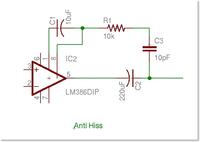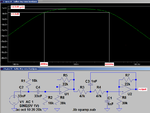Mayank Jain
Newbie level 4
I am using lm386 for signal amplification recievied from microphone and then send them to analog pin of arduino..do i need a speech filter circuit also between lm386 and arduino or lm386 would limit the frequency response to 300-3400hz (the speech audio spectrum range)??....
{ basically i am trying to make a audio recorder..the arduino will store the data in a wav file and transfer it to sd-card for playback }..
{ basically i am trying to make a audio recorder..the arduino will store the data in a wav file and transfer it to sd-card for playback }..


